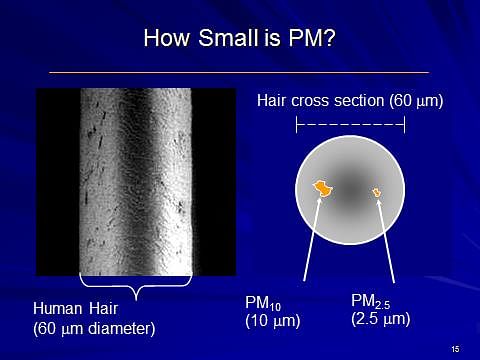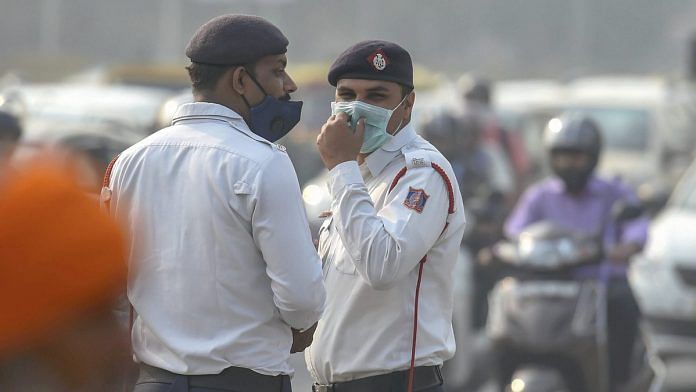Winter’s here and the Delhi air is getting toxic again. Here’s a guide to help you buy the right masks to get by.
New Delhi: The winter chill has arrived in Delhi, but so has the pollution-laden air that has robbed the season of much of its charm.
Over the past few years, pollution masks have become as much a part of the Delhiite’s wardrobe as sweaters and warm jumpers. But while it’s imperative for people to unashamedly wear masks for their own protection, it’s equally important to know which ones to pick.
The first step to that end is understanding the different types of air pollution. The impact of pollution is often judged by the size of the particles that cause it: These are called Particlulate Matter (PM), a physical mixture of gas molecules, dust, water droplets.
PM is usually measured in micrometres, and the two main types that affect breathing air are PM 10 and PM 2.5.
PM 10 and PM 2.5 are particles with a diameter smaller than 10 and 2.5 micrometres, respectively, which means they are really fine. To compare, a human hair is approximately 60 micrometres. Given their size, these particles easily make their way into our bodies with the air we breathe, exacerbating existing respiratory conditions like asthma and causing allergies.

Masks 101
There are mainly three kinds of breathing masks that can easily be identified from what we see on TV.
The first is the surgeon’s mask, which we’ve seen numerous medical characters wear. This only offers very basic protection, for example, from large particles and pesky creatures like flies.
The next is the hazmat mask, which we see TV government officials wear with their radioactive suits or when they break into a lab. These are great for filtering out chemicals and specific gases. We don’t require this level just yet.
The third type lies in between the two and is used for protection against pollution. These come in various shapes and sizes with a gamut of features. They are popularly called “dust masks”, “respirator masks”, or simply, “pollution masks”.
Pollution masks are typically designed for PM2.5, as those automatically filter out PM10 as well. These are designated by N-95 or N-99 notations, which means they filter out 95 per cent and 99 per cent of PM 2.5, respectively. While an N-99 is obviously preferable, an N-95 works just as well for most people in urban areas.
If you live near industrial areas, be advised that the ‘N’ ratings are usually not enough. Such areas require masks with ‘P’ or ‘R’ ratings, with quicker replacement (under a week) in order on account of the heavy pollutants and oil particles.
These masks also come with layers of filters of varying sizes, each of which filters out different sizes of particles. Some are washable, while some have replaceable filters. Some are even made for specific activities.
Masks should always fit snugly around the nose and mouth, without any gaps that may allow air another inlet for inhalation.
Also read: 93% of world’s children breathe air that could kill them before adulthood: WHO report
In Indian stores
Popular brands in India include the Vogmask, which are rated N-99. They even have activated charcoal, which helps run filters efficiently. They are marked CV: The activated charcoal (C) helps absorb gases like sulphur dioxide while the valve (V) eliminates condensation that builds up during exhalation.
This can be cleaned with a wet cloth.
Pros: N-99 rated; valve eliminates condensation; can be cleaned easily.
Cons: Metal clasps are breakable; obtaining the right fit is a challenge; gets warm when worn for long periods of time; traps strong odour like cigarette smoke.
Cambridge masks are one of the most efficient on the market today, with some filtering even PM 0.3 particles. They have N-99 rating and were developed by the United Kingdom’s defence laboratories. They have triple filters, with each successive filter removing finer particles.
They also have valves that prevent condensation build-up, and can be used while performing activities like running. They come in sizes ranging from XS to XL, and can be cleaned with a wet cloth.
Pros: N-99 rated; can filter out even PM0.3 particles; various sizes available; easy to clean.
Cons: Finding the right size can be a pain; ear loops can tug on ears.
Another brand, Respro masks, also owes its origin to the UK and has a rating of P-1, which works fine enough as they can filter out particles measuring one micrometre as well. They have filters that are to be replaced after a month’s use. These masks are loud and flashy, and can be used while performing physical activities. They aren’t available in child sizes.
Also read: Delhi’s pollution crisis needs a political solution, not the Supreme Court
Pros: P-1 rating is suitable for areas of high pollution; replaceable filters.
Cons: Can get hot when used for long periods of time; high cost.
The brand 3M has had a consistent record in building quality pollution masks. They are N-95 rated, but have efficient filters. However, these layered filters are not replaceable, which means the 3M pollution masks need to be discarded after a few uses.
Honeywell masks fall in the same category. Both masks are manufactured by makers with a history of making industrial-grade equipment.
Pros: Inexpensive; disposable; snug fit.
Cons: Uncomfortable to wear; not very sturdy; cannot be reused.
Lastly, Totobobo masks boast of a few useful innovations, like an indicator to say whether they fit properly on the face or have a leak. They are transparent, with white filters, so it’s easy to know when to replace them. They come in only two sizes, and have F-92, F-94, and F-96 ratings, which are equivalent to the ‘N’ scale.
Pros: Expensive; it’s easy to identify condition of mask, indicator for right fit.
Cons: Can break easily; ear straps are too tight when worn properly.
Going by popular ratings, the Vogmask is the most commonly and widely used in India, especially thanks to its ventilation tract that provides comfort during long commutes. This is followed by 3M, Honeywell, Cambridge, and even Dettol masks.
A common con among all masks that have sizes seems to be finding the right fit, which might entail a couple of trial-and-error purchase-and-return cycles.
Most masks are also undergoing evolution in their appearances, with many manufacturers now making them colourful and trendy. All masks are available on online retailers like Amazon, ready to make wanting to stay alive more fashionable.



